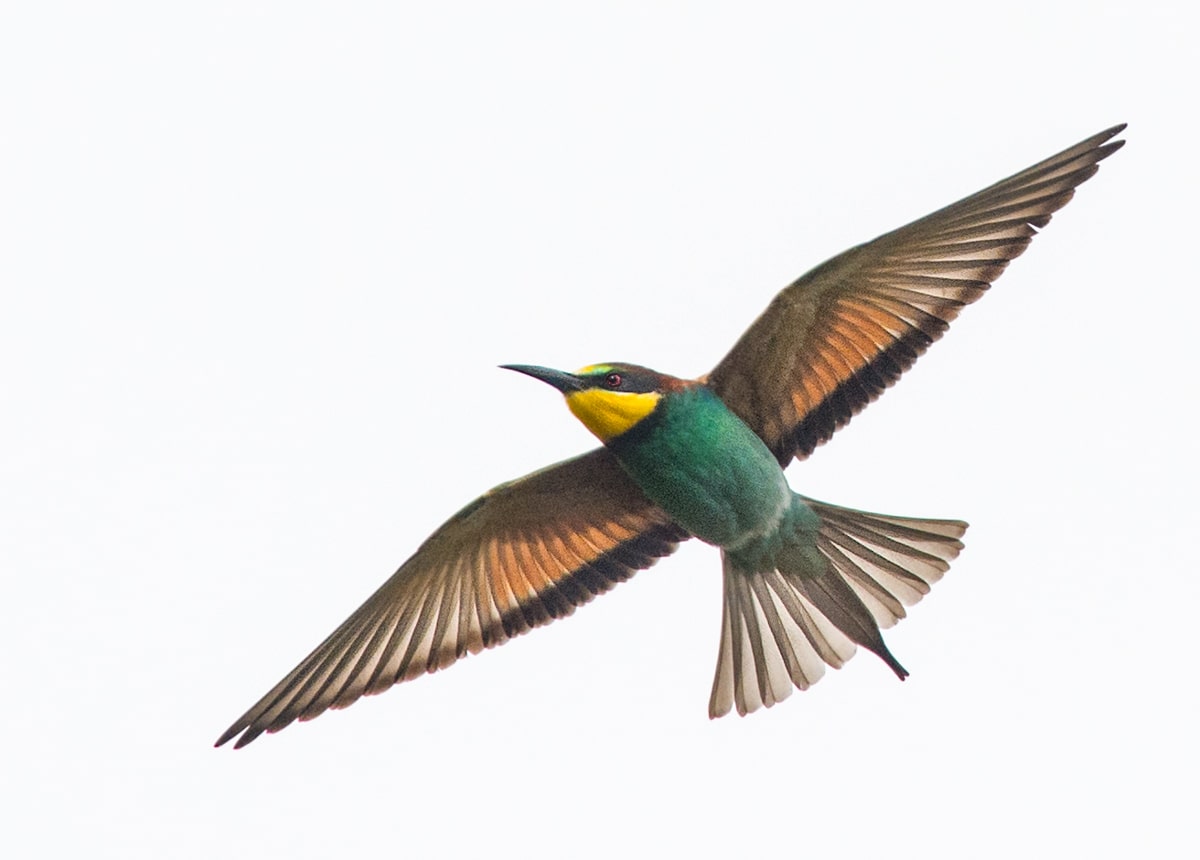
Crunchy, protein-rich insects are the most abundant life form on the planet by far. Many birds will have insects as part of their diet, but to be considered an insectivore, the insect proportion of the adult diet must be quite significant. One bird that wears its diet name on its wing is the bee-eater, for many symbolising the sound of summer as their warbling cries ripple high in the altitudes of hazy hot afternoons, only their distinctive silhouetted shape giving away their identity.
Bee-eaters are considered by many to be one of life’s absolute marvels, along with hummingbirds and kingfishers, birds whose unique hues stimulate our visual senses. But they are more than just pretty faces. These beautifully colored birds are formidable hunters who can deftly prey on insects that usually send most of us running in the opposite direction.
Found in many parts of the Old World except the northern latitudes, bee-eaters comprise around 30 species. Their evolutionary history remains a little hazy, but scientists believe they share a common ancestor with rollers and hoopoes.
Their main diversity is centred in Africa, then Asia, with a single species each in Europe, Australia, and Madagascar. Highly social birds, photographs often depict them sitting close to one another in groups or pairs, their richly-coloured feathers seeming to merge.
They favor open habitats like savannas, grasslands, and woodlands, where they can perch and scan for their favorite prey: flying insects, especially bees and wasps. Then, they set off and employ a hunting technique known as hawking and catch their prey on the wing. Aerial insectivores will only ever catch their food in flight; they won’t snap it up if it just happens to land or wander past whilst the bird is still.
Bee-eaters have exceptional sight and can spot their prey from up to 100m away. Prey is always caught from behind, and whilst smaller insects may be gobbled up instantly, larger wasps and bees will be taken back to the perch where they are unceremoniously beaten to death and broken up on the branch or rock and the pieces eaten. Any insect with a poisonous sting is smashed rump first onto a surface and then, whilst the bird keeps its eyes closed to protect itself from splashback, the venom is pushed out from the ruptured sac, and the rest of the insect is safely consumed.
Here are some of our favorite photographs that Owen has taken on his travels.
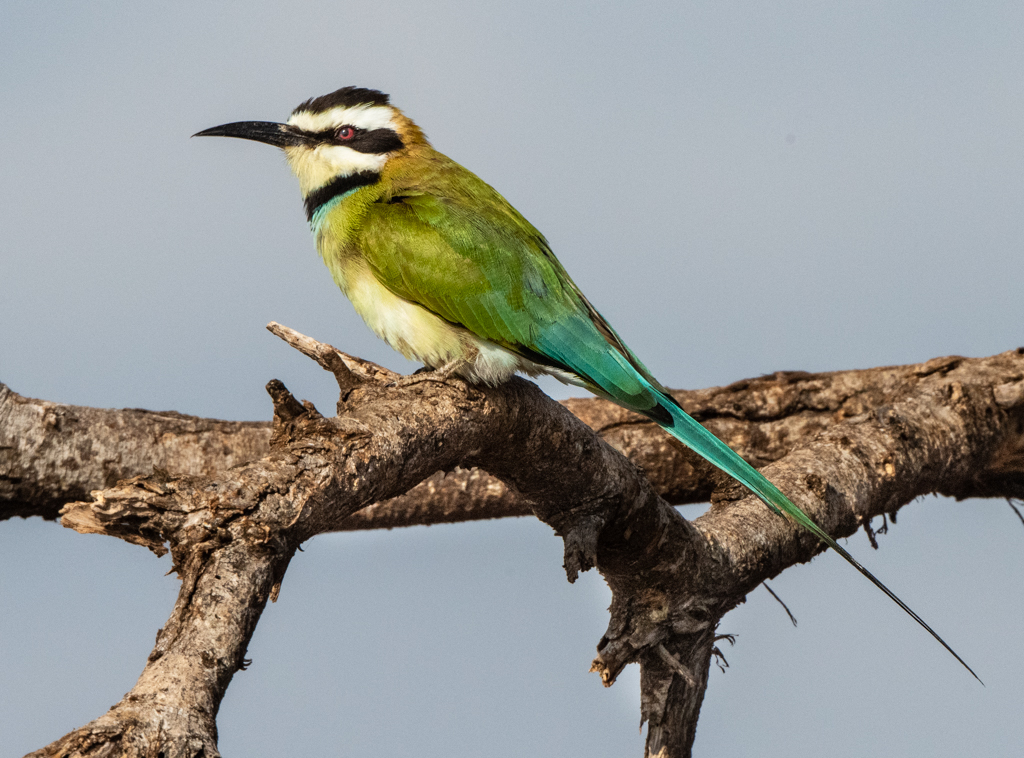
White-throated Bee-Eater
This stunning bird boasts emerald-green and pale blue plumage with a vibrant white throat and a brown-black crown, eye stripe and neck band. Found in sub-Saharan Africa often near waterways, white-throated bee-eaters are seasonal breeders, raising chicks in colonies during the rainy season. They’re agile hunters, hawking insects after a powerful launch from their perch.
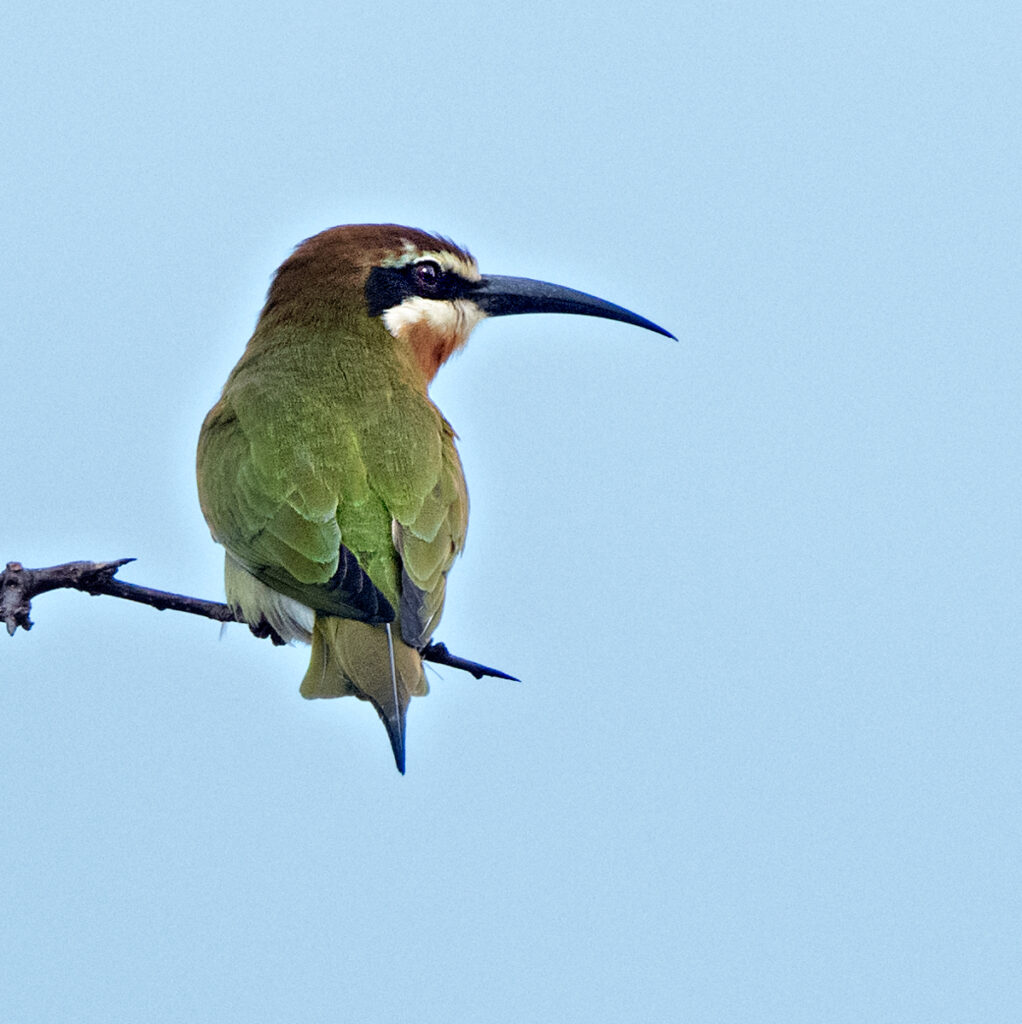
Madagascan Bee-Eater
Also more commonly known as the olive bee-eater, adults have bronzy-green plumage with an olive cap and white forehead, eyebrows, chin and cheeks. The rump and tail are blue, apart from the streamers, which are black. Endemic to the island of Madagascar but found on grassland and coastal mountain forests of East Africa, an isolated population can also now be found in coastal Angola. Unlike most bee-eaters, the species does not practice cooperative breeding.
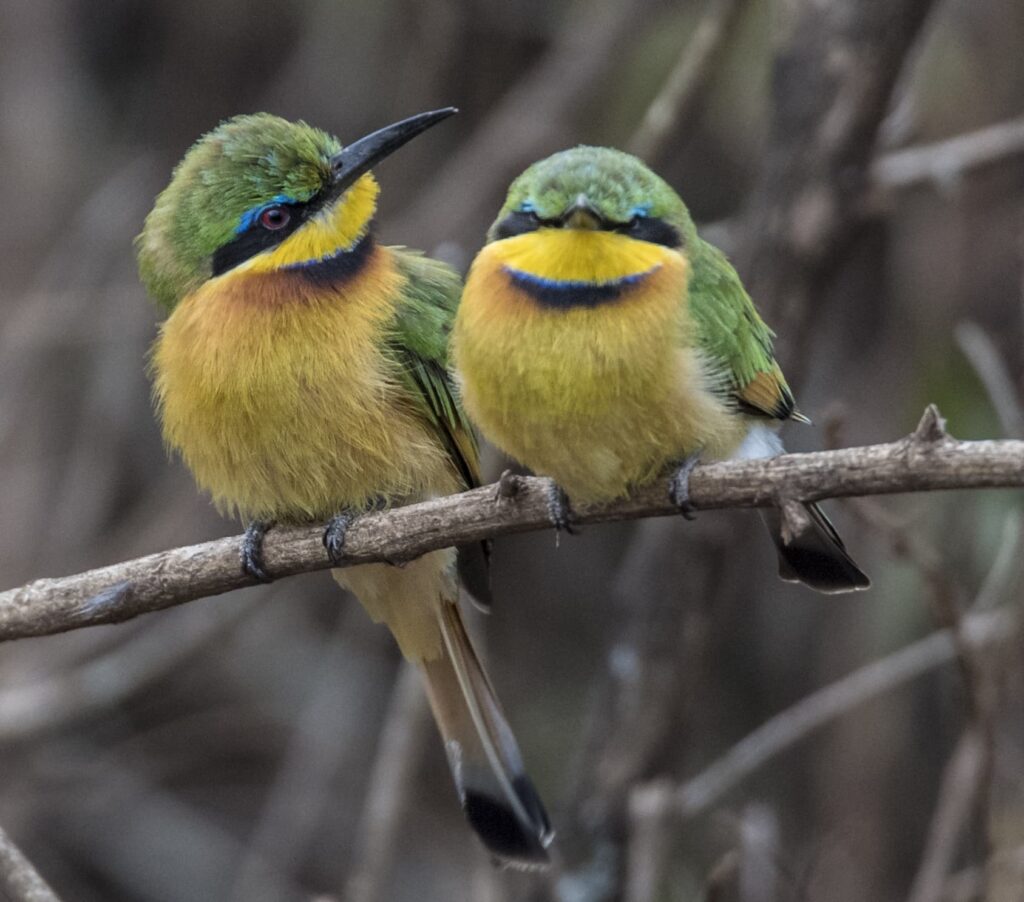
Little Bee-Eater
True to its name, the little bee-eater is the smallest member of the family, measuring around 15 cm from bill to tail tip. Found in sub-Saharan Africa, this bird dazzles with iridescent green plumage with a black mask and a white belly. Unlike many bee=eater species, they are solitary nesters and make tunnels in sandy banks, and sometimes in the entrance to the dens of aardvarks.
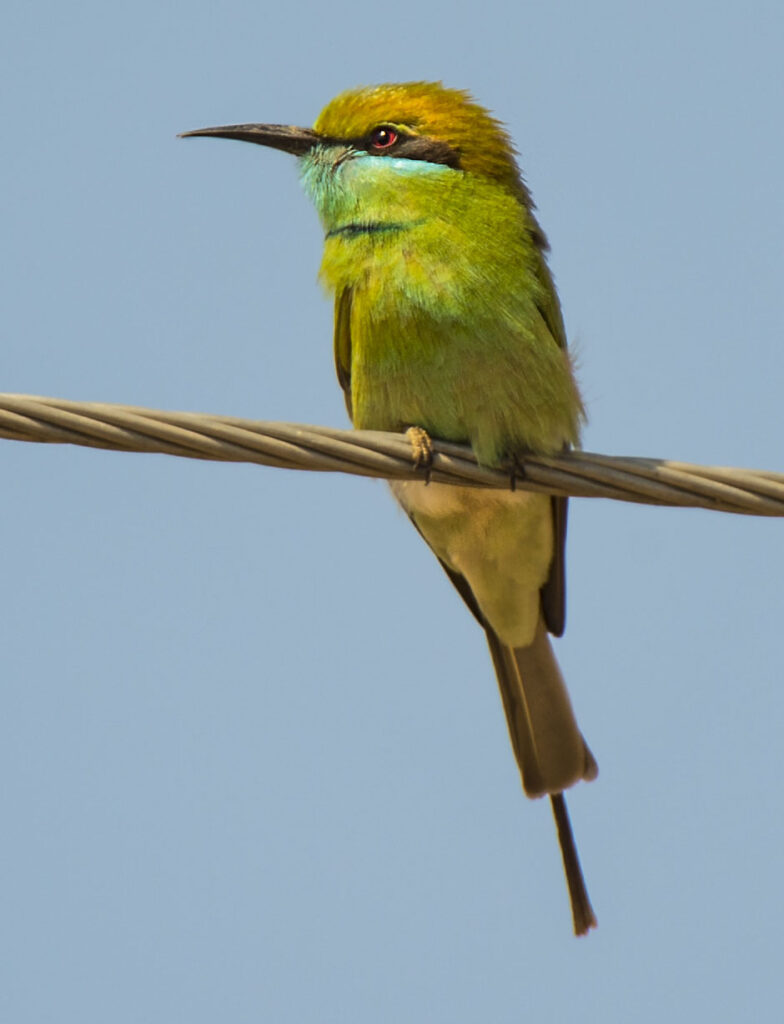
Green Bee-Eater
Green Bee-eaters, also known as Asian Bee-eaters, have a healthy population across the Indian continent and can also be found in Pakistan, Iran, Thailand and Vietnam. As the name suggests, their overall coloring is indeed a soft shade of green, but they also have rufous patches on their heads behind their eyes, and that striking thick black eye stripe extending from the base of their bill to their nape gives an ‘80s New Romantic look combined with the dusty powder-blue eye shadow effect on their cheeks beneath, sometimes extending to their throat. The crimson eyes complete the look of a visually stunning bird.
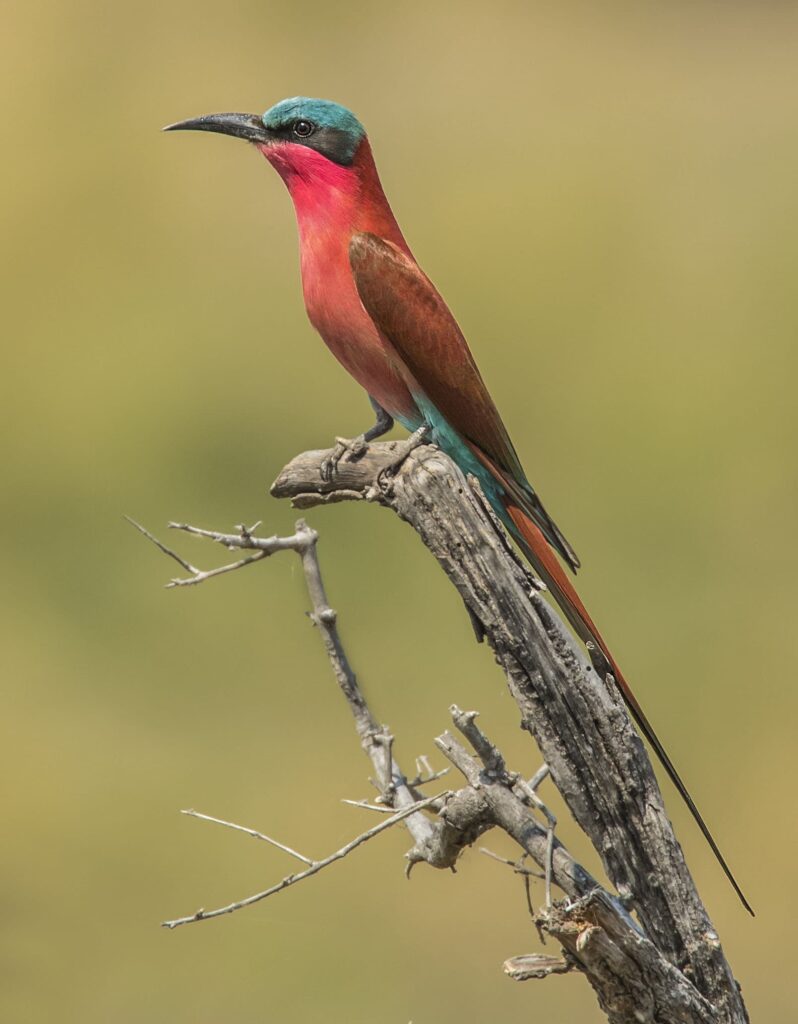
Southern Carmine Bee-Eater
A splash of color in the African savanna, the southern carmine bee-eater lives up to its name with vibrant carmine-red underparts and a turquoise head. Perches may include branches of vegetation or even the backs of other animals including birds like the Kori bustard. They are attracted to wildfires because of the flushed insects and are often seen circling high in the air, and they too join in the circling, sometimes around larger animals and even cars to catch the insects that are trying to escape.
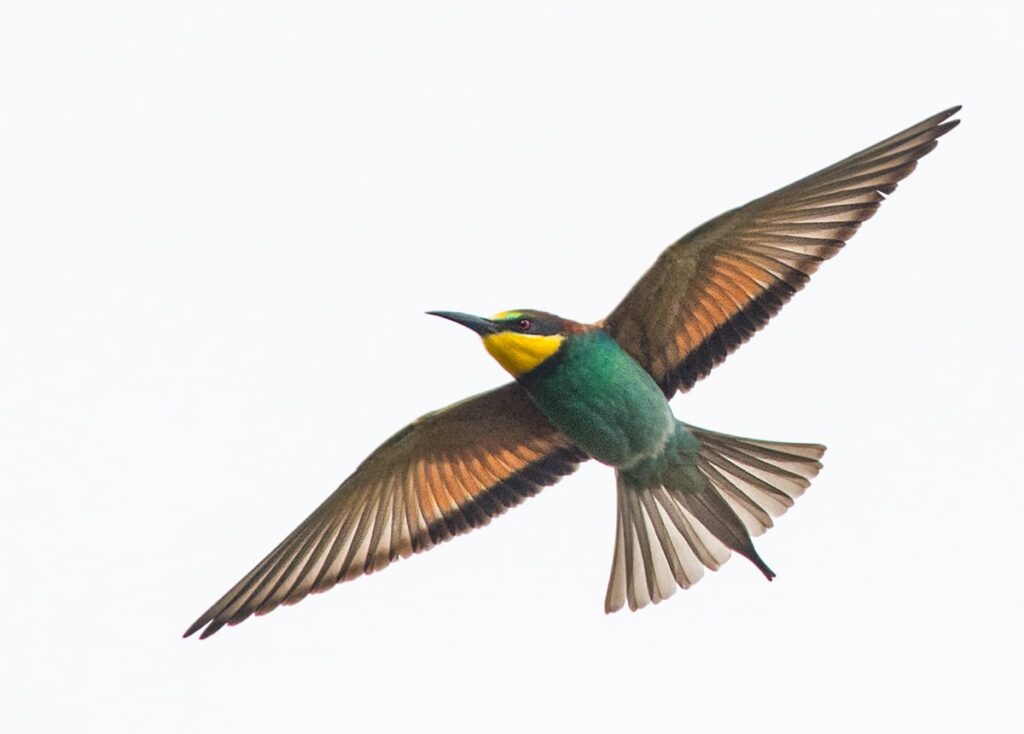
European Bee-Eater
The European bee-eater breeds in southern and central Europe, northern and southern Africa, and western Asia. Except for the resident southern African population, the species is strongly migratory, and spends its winters in tropical Africa. This richly colored slender bird has brown and yellow upper parts, whilst the wings are green, and the beak is black. The most important prey item in their diet is the European honeybee.



